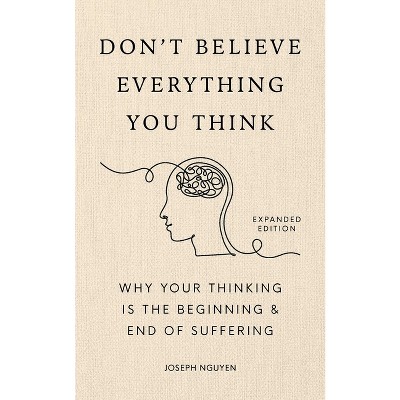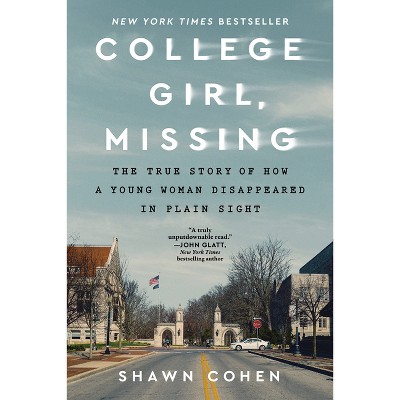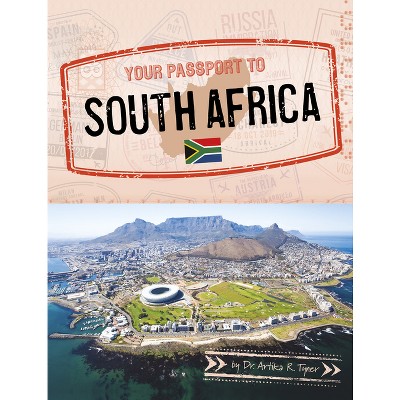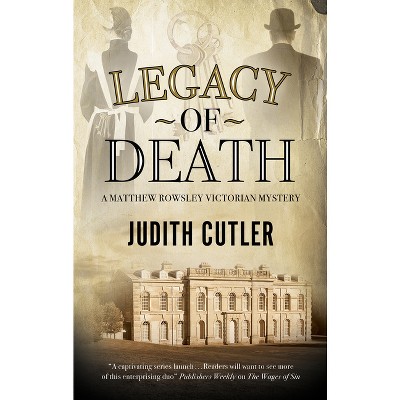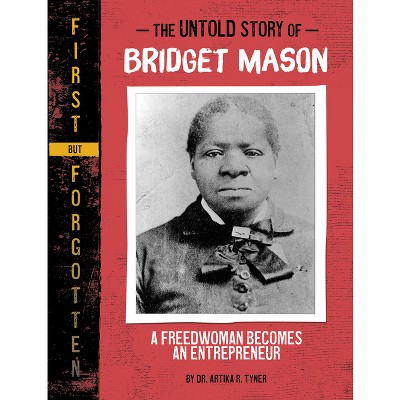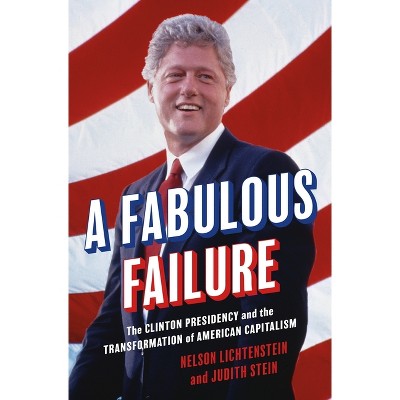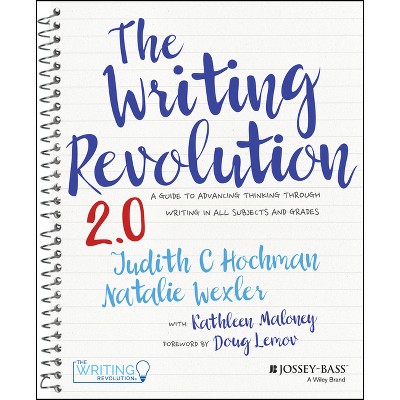Women in American Cartography - by Judith Tyner (Paperback)

About this item
Highlights
- Although women have been involved in mapping throughout history, their story has largely been hidden.
- About the Author: Judith Tyner is professor emerita at California State University, Long Beach.
- 150 Pages
- History, Women
Description
About the Book
Major histories of cartography have, until recently, ignored women's contributions to mapmaking and the assumption was that women played no role. Women in American Cartography examines the work of over fifty American women cartographers from the beginning of the nineteenth cen...Book Synopsis
Although women have been involved in mapping throughout history, their story has largely been hidden. The standard histories of cartography have focused on men. A woman's name is rarely found. In Women in American Cartography, Judith Tyner argues that women were not deliberately erased but overlooked because of the types of maps they made and the jobs they held.Tyner looks at over fifty women exemplars in American cartography and their maps. She looks at teachers who made school atlases in the early nineteenth century; at pictorial mapmakers and book illustrators who created popular maps; at women who pioneered social and persuasive mapping, promoting causes such as suffrage; at women travelers who recorded their trips and mapped unexplored places; at women whose maps helped win Word War II; at women academics who studied, taught, and wrote about cartographic theory at colleges and universities; and at women who worked in government agencies and commercial mapping companies. These are just a few of the stories of women in American cartography.Review Quotes
"Women in Cartography: An Invisible Social History, by Judith Tyner, is an engaging and timely contribution to the history of cartography and the culmination of a career spent making women's contributions to map making more visible." --Imago Mundi
"Women in American Cartography: An Invisible Social History will be of interest to students and researchers in women's and gender studies, as well as the history of cartography, and should be on the shelves of libraries supporting these programs." --Cartographic Perspectives "Judith Tyner's most recent book "Women in American Cartography" begins with a refreshing moment of context when she shares that she can read a map despite her gender. Tyner seeks to uncover how women have made and interacted with maps from the eighteenth century onward. This book can be viewed as something of a call to action, a roadmap gifted by Tyner to a new generation of women and male academics and cartographers." --The Portolan ""Women in American Cartography" pulls together a lifetime's of research on the place of women in cartography in the United States. Its author, Judith Tyner has a longstanding interest in the history of cartography and in particular, on the role of women therein. In summary, the volume breaks new ground by bringing together the stories of women cartographers to make sense of their contributions to the field and to show how social attitudes and circumstances shaped their opportunities to make maps." --The Globe: Journal of the Australian and New Zealand Map Society "Map histories have until recently largely ignored female cartographers, partly because maps were not always signed by their creators. However, as women gained greater access to education in the 19th century, geography and mapmaking became important school subjects for them. Tyner (California State Univ., Long Beach), who has written previously on embroidered maps and globes, discusses the roles of Emma Willard and the Westtown School in Pennsylvania in teaching cartography to these women. A surge of American women cartographers came during WW II, when there was an urgent need for new maps of all parts of the world. With men serving in the military, opportunities for training and employment in the field were finally made available to women, and many continued to serve in the map departments of federal and state governments, libraries, and commercial firms once the war ended. Through her investigation Tyner presents brief biographies of a number of notable women, including Marie Tharp, who mapped the ocean floor and discovered the Atlantic Rift Valley, and Gertrude Bracht, the creator of state highway maps for Oklahoma and a map of Route 66, "the Main Street of America." Summing Up: Recommended. All readership levels." --Choice Reviews "Women have long played significant roles in American cartography in educational, commercial, and governmental arenas. In Women in American Cartography: An Invisible Social History, Judith Tyner offers an engaging historical and contemporary account of their individual and collective challenges, trajectories, and contributions." --Janice J. Monk, University of Arizona "The nation's foremost expert on women's contributions to maps, mapmaking, and map use, Tyner, draws on her own research and that of others to produce a comprehensive, well-organized, richly illustrated, and engaging history. The culmination of decades of research, this book fosters a growing interest among map historians in the important roles women took on before gender-neutral geospatial technology canceled gender differences in cartography." --Mark Monomier, Syracuse University "Women in American Cartography kills the old scientific chauvinistic assumption that only men were cartographers. Tyner weaves together years of historical research with her own experiences as a woman cartographer, illuminating the often overlooked, obscured, or downplayed roles women have played in American map production. From early eighteenth-century schoolgirls to women working today in mapping/Geographic Information System companies, Tyner expands our understanding of women's contributions to the American geographical imagination. This is an important addition to American map history." --Christina Dando, University of Nebraska Omaha"Women in American Cartography" pulls together a lifetime's of research on the place of women in cartography in the United States. Its author, Judith Tyner has a longstanding interest in the history of cartography and in particular, on the role of women therein. In summary, the volume breaks new ground by bringing together the stories of women cartographers to make sense of their contributions to the field and to show how social attitudes and circumstances shaped their opportunities to make maps.
Judith Tyner's most recent book "Women in American Cartography" begins with a refreshing moment of context when she shares that she can read a map despite her gender. Tyner seeks to uncover how women have made and interacted with maps from the eighteenth century onward. This book can be viewed as something of a call to action, a roadmap gifted by Tyner to a new generation of women and male academics and cartographers.
Map histories have until recently largely ignored female cartographers, partly because maps were not always signed by their creators. However, as women gained greater access to education in the 19th century, geography and mapmaking became important school subjects for them. Tyner (California State Univ., Long Beach), who has written previously on embroidered maps and globes, discusses the roles of Emma Willard and the Westtown School in Pennsylvania in teaching cartography to these women. A surge of American women cartographers came during WW II, when there was an urgent need for new maps of all parts of the world. With men serving in the military, opportunities for training and employment in the field were finally made available to women, and many continued to serve in the map departments of federal and state governments, libraries, and commercial firms once the war ended. Through her investigation Tyner presents brief biographies of a number of notable women, including Marie Tharp, who mapped the ocean floor and discovered the Atlantic Rift Valley, and Gertrude Bracht, the creator of state highway maps for Oklahoma and a map of Route 66, "the Main Street of America." Summing Up: Recommended. All readership levels.
Women in American Cartography: An Invisible Social History will be of interest to students and researchers in women's and gender studies, as well as the history of cartography, and should be on the shelves of libraries supporting these programs.
Women in Cartography: An Invisible Social History, by Judith Tyner, is an engaging and timely contribution to the history of cartography and the culmination of a career spent making women's contributions to map making more visible.
The nation's foremost expert on women's contributions to maps, mapmaking, and map use, Tyner, draws on her own research and that of others to produce a comprehensive, well-organized, richly illustrated, and engaging history. The culmination of decades of research, this book fosters a growing interest among map historians in the important roles women took on before gender-neutral geospatial technology canceled gender differences in cartography.
Women have long played significant roles in American cartography in educational, commercial, and governmental arenas. In Women in American Cartography: An Invisible Social History, Judith Tyner offers an engaging historical and contemporary account of their individual and collective challenges, trajectories, and contributions.
Women in American Cartography kills the old scientific chauvinistic assumption that only men were cartographers. Tyner weaves together years of historical research with her own experiences as a woman cartographer, illuminating the often overlooked, obscured, or downplayed roles women have played in American map production. From early eighteenth-century schoolgirls to women working today in mapping/Geographic Information System companies, Tyner expands our understanding of women's contributions to the American geographical imagination. This is an important addition to American map history.
About the Author
Judith Tyner is professor emerita at California State University, Long Beach.
